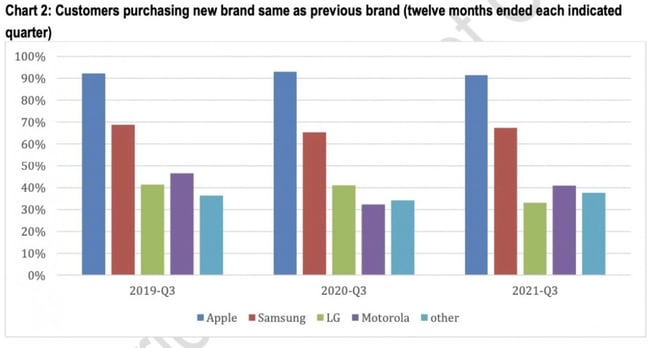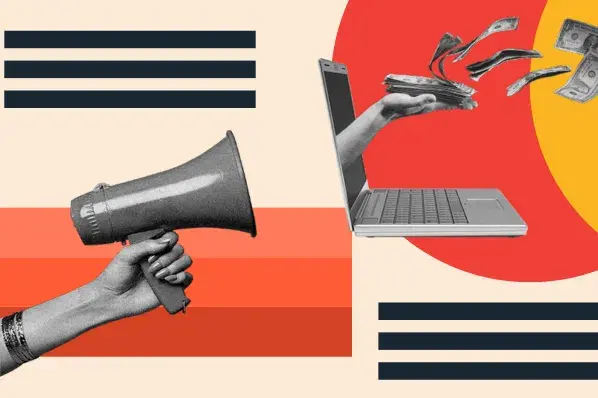In this post we’ll explore:
- First-Mover Advantage Definition
- First-Mover Benefits
- First-Mover Disadvantage
- First-Mover Advantage Examples
When I started selling HubSpot software in 2007, no one had ever heard of inbound sales and marketing. When I spoke with business owners, I had to explain what these concepts were and how they worked.
Because HubSpot provided a solution that was completely unique in the market, we had no competition from other companies selling the idea of inbound. As the exclusive provider of inbound software, we were able to scale the company quickly from several hundred to several thousand customers.
It wasn’t until two or three years later other software companies began offering technical solutions for inbound. But by that time, we had a sizable lead in the market.
Having the first-mover advantage in your vertical can make you a leader in new technology, knowledge sharing, and cost. And patents and copyrights can ensure certain of these advantages are untouchable by future competitors.
Advantages of Being a First-Mover
1. Early Market Share
Being the first in the market means that you can set the standards for the industry an establish a dominant market share. This head start could make it much harder for future competitors to catch up.
2. Higher Margins
Since you’ll be first in the market, you will also have the advantage when setting prices. Early entrants have the ability to potentially charge higher prices due to the lack of competition, which could result in higher profit margins.
3. Strong Brand Recognition
Being first on the scene also comes with branding benefits. You’ll be able to establish strong brand recognition and awareness, getting a strong foothold on brand positioning and making your product top of mind for customers.
4. Learning Curve Advantage
When you’re first to do something, there’s always a learning curve. Luckily you’ll have all the kinks worked out by the time competitors enter the market. You’ll be able to observe customer behavior and hone in on their specific needs, becoming an expert in your field. As a result, it will be easier to perfect your strategies to remain an industry leader.
First movers also have the gift of capturing consumer attention, mindshare, and brand loyalty before competitors arise. So, what are some real-life examples of the first-mover advantage? Here are a few of my favorites.
First-Mover Advantage Examples
1. Coca-Cola
While Coke wasn’t the first soda to hit the market, it was the biggest. Vernors and Dr. Pepper actually debuted earlier, but a first-mover advantage doesn’t necessarily mean the first company to launch has the advantage. Rather, it refers to the first company to capture a large market share.
The first soda syrups started showing up around 1881. But when Coca-Cola debuted in 1886, they immediately became the consumer favorite. By the time Pepsi launched, in 1898, Coke was already selling a million gallons per year.
Pepsi went bankrupt twice and rebranded in the 1950s to keep up with their rival. And in the 1960s, they merged with Frito Lay giving Pepsi a successful market share in snack foods, a boost in stocks, and the lifeline they needed to compete. But Coke’s biggest beverage brands have reached more than $1 billion in sales — something Pepsi has never quite been able to top.
2. Kellogg’s
In 1863, James Caleb Jackson created a graham flour dough breakfast cereal called granula. He was first to market, but never captured much consumer attention. Surgeon John Harvey Kellogg made a similar version, called granola, shortly after. But it wasn’t until he and his younger brother debuted Corn Flakes, added sugar, and began mass-marketing that their brand really started to take off and they captured the first-mover advantage.
While Post and Quaker Oats created similar cereals, none of them could catch up to the brand affinity and popularity of Kellogg’s. After WWII, Frosted Flakes, Tony the Tiger, and television advertising further cemented their status as the favorite cereal brand.
Their 2000 acquisition of Kashi allowed Kellogg’s to evolve with the natural and organic food boom — key to maintaining their popularity as a brand.
3. Apple
When Apple unveiled the first iPhone in 2007, they changed the mobile phone landscape for the first time — and they changed it for good. In 2008, HTC became the first manufacturer to make Android devices and other brands followed.

While Apple’s iOS and Google’s Android operating systems still have closely aligned loyalty rates (a recent Consumer Intelligence Research Partners report has Apple’s iOS loyalty rate topping out at 90% while the closest Android competitor, Samsung has under 70%). This allows Apple to maintain its status as the original and most preferred smartphone on the market today.
4. Amazon
Remember when Amazon only sold books? They became the first major online bookseller and a force longtime brick-and-mortar stalwarts like Barnes & Noble and Borders couldn’t keep up with.
Borders shuttered in 2011 and Barnes & Noble — Where Amazon’s Jeff Bezos used to have company meetings — has consistently seen falling shares, revenue, layoffs, and store closures.
Ironically, Amazon has even encroached on Barnes & Noble’s physical store stronghold over the past few years. Fast shipping, an increasing number of Prime members, and low prices have powered Amazon to a seemingly unbeatable market share.
5. Uber
By the time it burst onto the scene in 2009, Uber was not the first ridesharing company, but it was the largest and most successful, beating out pioneer Sidecar for eventual market domination.
Debuting in 2012, Lyft became Uber’s most ferocious competitor. But even a damaging year of scandal in 2016 — which saw them lose their founder and CEO and weather the “Delete Uber” campaign — didn’t dilute Uber’s market share too much. Zippia reports that Uber has a 71% share of sales in the U.S. rideshare market, whereas Lyft only has 29%.
6. Kindle
Amazon beat Barnes & Noble to the punch again with their 2007 e-reader, the Kindle. Barnes & Noble answered with the Nook in 2007, but it was too late. Nook peaked as a $933 million per year business, but, in 2016, they reported earnings of just $146 million.
Two years of Kindle brand loyalty managed to overcome an initial market share grab by Barnes & Noble, which has continued to decline in popularity.
7. eBay
Founded in 1995, eBay managed to survive the dot-com bubble and do the unthinkable — withstand Amazon’s online auction spinoff, “Amazon Auction.”
Acquisitions of companies including iBazar and PayPal, and the 2009 sale of Skype, have helped it maintain market relevancy and dominance. It’s still the world’s largest online auction site, with 138 million active buyers in the second quarter of 2022.
While the benefits certainly give first-movers a head start to success, being a first-mover does have a few drawbacks.
Disadvantages of being a first-mover include:
- Uncertain Demand: When there is no established precedence for a product or service, predicting an accurate demand for your product is challenging. Overestimating demand could result in excess inventory as well as major financial loss.
- Copycat Businesses: It’s unnecessary to reinvent the wheel, so expect competitors to try to capitalize on your success. Copycat competitors may pop up offering the same products or services at a lower cost and iterate on the original product you created. This could negatively impact your business and cut into your profits.
- High R&D Costs: Being a first mover is also expensive. Brands will need to invest a lot of money upfront for the research and development of their product or service. Without any guarantee of success, this expense may be too great for new entrepreneurs to take on.
TiVo, Redbox, Friendster, and Yahoo are examples of first-mover companies that lost out to second-mover companies (i.e., cable provider DVR and streaming services, Netflix, Facebook, and Google).
These once-powerful pioneers break down the myth that first to market is always the strongest or best. They also serve as cautionary tales for first-movers.
Make the Most of First-Mover Advantage
While being first to market might give entrepreneurs the ability to establish their product/service as the industry standard and make a strong first impression on consumers and future competitors alike, it’s important to keep an eye on those who follow.
Maintaining open lines of communication and an always evolving product can help you hold onto your advantage and build a blue chip brand that’s almost impossible to beat.
Editor's note: This article was originally published in October 2018 and has been updated for comprehensiveness.
Business Growth

.jpg)

![How Entrepreneurs Navigated (& Survived) Recessions [New Data & Expert Tips for Economic Slumps]](https://53.fs1.hubspotusercontent-na1.net/hubfs/53/Copy%20of%20Featured%20Image%20Template%20Backgrounds%20(55).png)


![Grants for Black-Owned Businesses and Other Funding Resources for Black Business Owners [+ Deadlines for 2025]](https://53.fs1.hubspotusercontent-na1.net/hubfs/53/copy%20of%20jade%20walters%20btb%20(41).png)

%20(1)-1.png)

![Here's How to Value a Company [With Examples]](https://53.fs1.hubspotusercontent-na1.net/hubfs/53/Value%20a%20Business%20fi%20(1).png)

